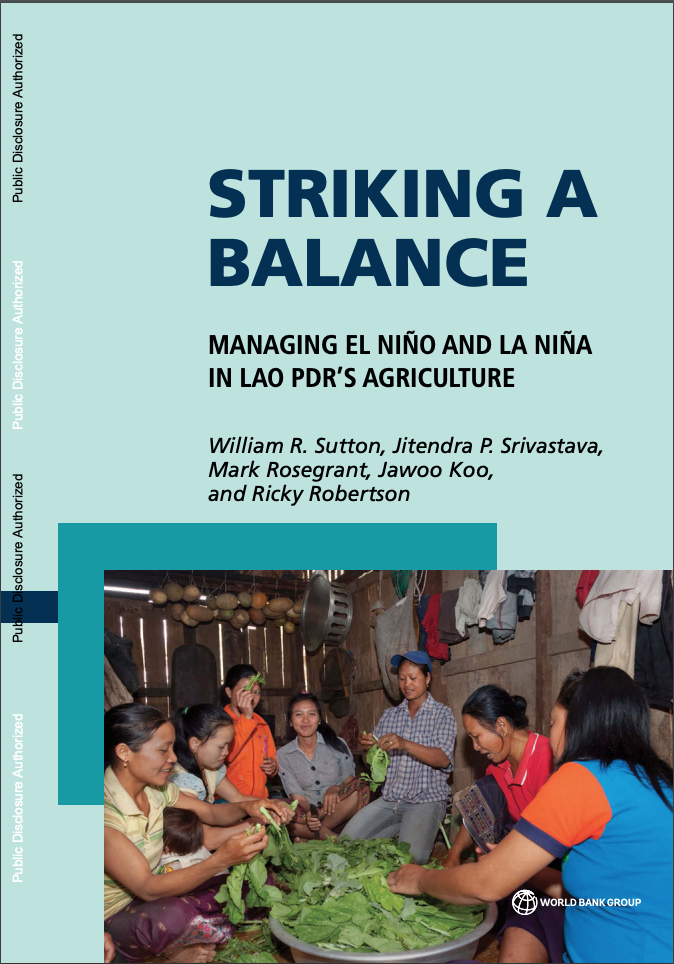World Bank
May 8, 2019
El Niño Southern Oscillation, or ENSO, refers to the natural year to year variations in the ocean and atmosphere in the tropical Pacific. ENSO refers to both the El Niño and La Niña phenomena together. El Niño is characterized by unusually warm ocean temperatures along the Equatorial Pacific, whereas La Niña is characterized by unusually cold ocean temperatures in this region. It is important to note that ENSO and climate change are two separate phenomena that share many attributes, and some key differences.
Lao PDR is exposed to climate shocks related to ENSO. Due to the country’s varied climate and terrain, ENSO impacts in Lao PDR are often highly localized.
- An analysis of rainfall patterns from 1980 to 2015 shows that average October-to-June rainfall was about 30% lower in El Niño years than in non-ENSO, or neutral, years.
- By contrast, rainfall is about 16% higher in April-June during La Niña years than during neutral years.
- Since 1966, Lao PDR experienced 38 extreme climate events, which caused $625 million in damages.
- 71% of those flood or drought disasters in Lao PDR coincided with ENSO events. The most damaging was the El Niño-related droughts and floods in 1992, which caused over $300 million in damages.
ENSO’s impacts on agriculture have economywide implications.
- Agriculture is an important economic sector in Lao PDR, providing over 68% of employment and a quarter of Gross Domestic Product.
- Many of the country’s poor live in rural areas and work in agriculture, making them particularly vulnerable to climate shocks.
- ENSO’s subnational impacts show that El Niño decreases crop yields, while La Niña increases crop yields. Lao PDR has made significant progress in reducing poverty and food insecurity, but El Niño threatens this trend, if not offset by increased incomes.
The Lao government has begun to better prepare for climate change and natural resource management challenges, but more could be done to prepare for ENSO events.
- Lao PDR has taken important steps to address disaster risk management and climate change adaptation, including shifting from emergency response approaches to preventive risk reduction approaches.
- The report suggests additional measures that could help the country increase preparedness for future ENSO events, including;
- Preparing response plans for ENSO-related climate events
- Forming a national ENSO task force and creating a government focal point on ENSO
- Raising awareness about ENSO
- Investing in rural infrastructure.
Categories: Banner




